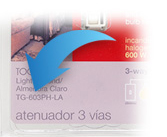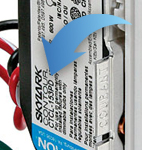
Explore Knowledge Articles
Integrating Apple HomeKit with the Lutron App
This article details requirements and instructions for integrating Apple HomeKit with your Lutron lighting control system. Included are step-by-step instructions on linking, programming, and using voice commands with Siri voice control.
Skip To: Integrating with HomeKit | Adding Rooms, Scenes, and People to Home | Using Siri Voice Commands
System Requirements
Lutron Hardware / Software:
- RadioRA 3 system with an RR-PROC3 Processor, or a...
- RadioRA 2 Select system with an RR-SEL-REP2 Main Repeater, or a...
- Caséta system with a L-BDG2 or L-BDGPRO2 Smart Hub
- Lutron App version 2.2 or later.
Apple Hardware / Software:
- An iPhone, iPad, or iPod touch running iOS 10.0 or later.
- Optional devices for control of Apple Home remotely:
- AppleTV 4th Generation or later
- HomePod / HomePod mini 2nd Generation or later
- iPad running iOS version iOS 16 or earlier. iOS 17 or later does not support using an iPad as a Home hub.
Network:
- The iOS device(s) and the Lutron smart bridge must be connected to the same network (i.e. same IP Address strand) to integrate.
- Successful connection example: Bridge IP: 192.168.1.18 & Phone IP: 192.168.1.20 (first three decimals of the bridge and phone match).
- Unsuccessful connection example: Bridge IP: 192.168.1.4 & Phone IP: 192.168.16.20 (first three decimals of the bridge and phone do not match).
Integrating Apple HomeKit with the Lutron App
The Lutron Processor/Main Repeater/Smart Hub must be activated before integrating. Follow the steps below to link your Lutron system with Apple Home:
Note: Only load controllers (dimmers, switches, fan controls, smart plugs, and hybrid keypads) display in the Apple Home app. Lutron Smart Hubs, Repeaters, Processors, Pico remote controls, and standard keypads are not controllable devices via the Home app.
1. Tap the  Settings icon in the Lutron app.
Settings icon in the Lutron app.
2. Select Integrations from the Settings menu.
3. Select Apple HomeKit from the Integrations screen.
4. Tap Enter Setup Code.
5. Use your smart device's camera to scan the HomeKit setup code. If you are unable to scan the 8-digit HomeKit code, choose Enter code... to enter it manually.
Note: HomeKit codes are located on the label at the bottom of the Lutron Hub/Repeater/Processor.
Radio RA3 Processor:
RA2 Select Main Repeater:
Caseta Smart Hub / Smart Hub Pro:
6. Select OK when prompted. You have successfully integrated your Lutron Smart Hub/Main Repeater/Process with Apple HomeKit.
7. Open the Apple Home app and follow the prompts. It may take a few minutes for newly added devices to synchronize with the Home app.
Adding Rooms, Scenes, and People to Apple Home
1. Open the Apple Home app from your iOS device.
2. Select Add from the home screen of the Home app.
3. Choose one of the following options:
- Add Scene - Create a scene to control multiple devices/zones simultaneously. This is useful for creating custom Siri commands.
- Add Room - Create a room to organize the Lutron devices to your liking.
- Add People - Grant another iOS user access to your Apple Home system. This allows them to control the devices integrated with HomeKit.
Note: Do not use the Add Accessory flow in the Apple Home app to add a new Lutron device. HomeKit-compatible Lutron devices will automatically sync into a linked Apple Home after they are added to the Lutron app.
Using Siri Voice Commands to Control your Lutron System
Siri voice commands are used to control individual devices as named in the Lutron App or Scenes created in the Home App.
Below are examples of Siri voice commands along with the Lutron lighting device(s) response to said commands:
- “Turn on the lights" - Sets all lights to 100% (on / full brightness)
- "Turn off the lights." - Sets all lights to 0% (off)
- "Brighten the lights" - Raises the light level of all lights by 25%
- "Dim the lights to 50%" or "Set the lights to 50%." - Sets all lights to 50%
- "Turn on the upstairs lights." - Sets the room/zone named "Upstairs" to 100% (on / full brightness)
- "Turn off Brandon's light." - Sets the room/zone named "Brandon" to 0% (off)
- "Dim the overhead lights by 40%" - Lowers the room/zone named "Overhead" by 40%
- "Brighten my kitchen lights by 15%" - Raises the light level for the room/zone named "Kitchen" by 15%
- "Turn up the kitchen lights" - Works the same as Brighten for all lighting loads assigned to "Kitchen"
- "Turn down the kitchen lights" - Works the same as "Dim" for all lighting loads assigned to "Kitchen"
- “Are there any lights on?" - Siri will tell you if you’ve left any lights on.
- “What’s the level of the lights in the kitchen?” - Siri tells you the current light level of the room/zone named "Kitchen".
Below are examples of Siri voice commands and the expected Lutron shading device response:
- "Open the shades" or "Raise the shades" - Sets the shades to 100% (fully open)
- "Close the shades" or "Lower the shades" - Sets the shades to 0% (fully closed)


